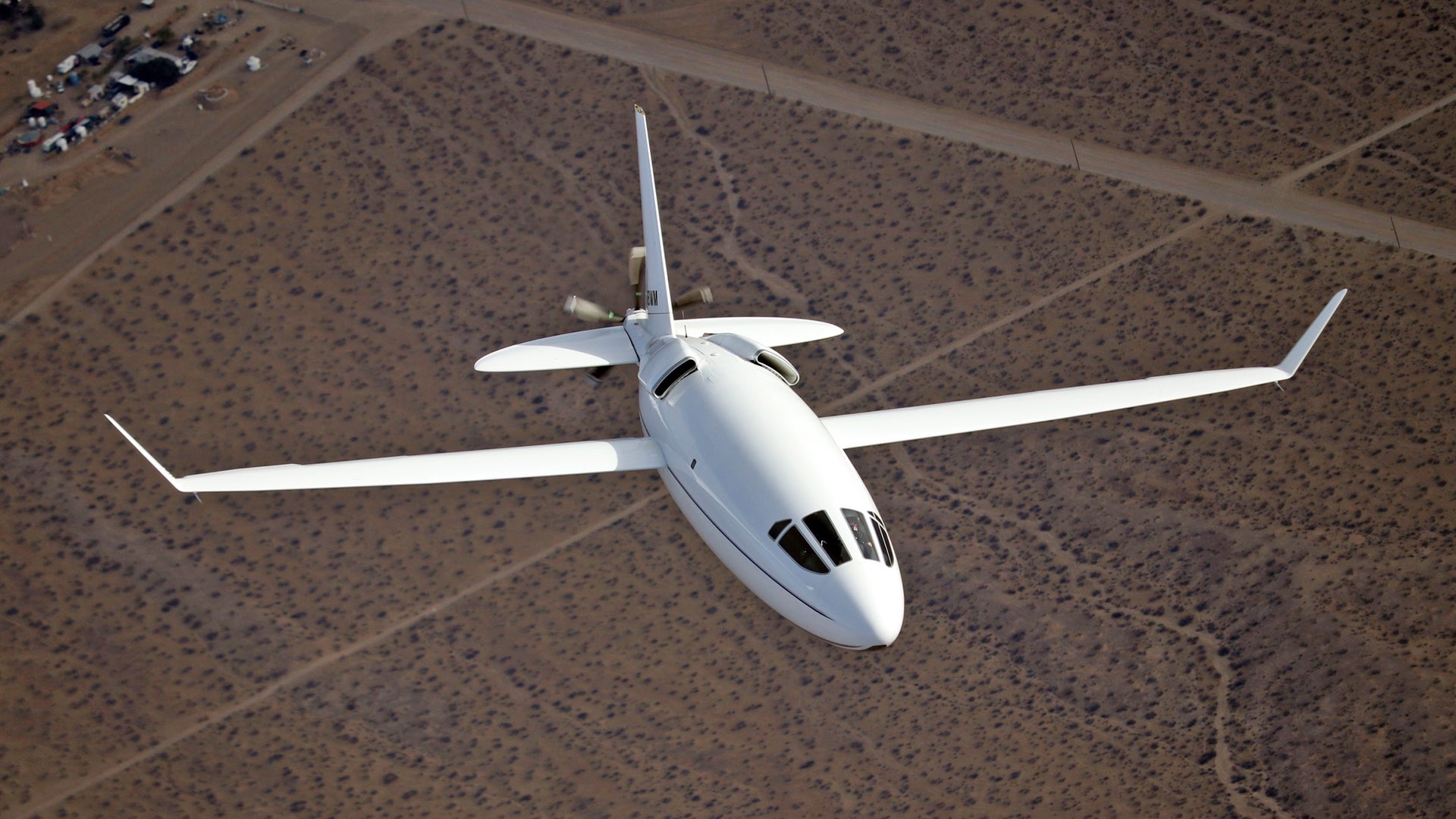Otto Aviation says it has finished the first phase of testing its potentially revolutionary high-efficiency Celera 500L aircraft, which the company officially unveiled last year. The prototype has now flown approximately 51 flight hours across 55 individual sorties, including at speeds over 250 miles per hour and at altitudes up to 15,000 feet, the company said in a press release today.
The War Zone was the first to report on the existence of this plane, with its distinctive tear-drop shape and pusher-propeller configuration, after a picture of it at the Southern California Logistics Airport near Victorville, California emerged in 2017. We have been tracking its development very closely since then.
The video below is a collection of footage Otto Aviation has released from its Phase One testing of the Celera 500L.
“The data from our first phase of test flights shows that we are on the path to achieving our goals for the aircraft,” William Otto Jr., CEO of Otto Aviation, said in a statement. “We couldn’t be more excited in this step toward our mission of having a production aircraft in 2025 and we look forward to beginning the next phase of development where we will take the aircraft to higher altitudes and higher speeds.”
Otto and his company believe that the Celera 500L’s design, with its tear-drop “laminar flow”-optimized shape, long and slender wings, and high-efficiency multi-fuel piston engine, combined with a flight profile intended to make the best use of the plane’s features, will inaugurate a revolution in low-cost air travel. The firm’s website refers to this as the “air taxi model.”

“During test flights, the team was able to visualize the laminar flow state with a precision infrared camera mounted on a chase aircraft, quantifying extensive laminar flow capability on external surfaces,” today’s press release explained. “The team also tested wing and fuselage surfaces for laminar flow robustness and gathered additional test data supporting the development work for the production vehicle.”
You can read more about the novel features of this plane and its Raikhlin Aircraft Engine Developments (RED) A03 V12 piston engine in detail here.
“Several flights reached airspeeds of over 250 mph at altitudes up to 15,000 feet which projects to an airspeed of 460 mph at 50,000 feet,” Otto Aviation release said. In the past, the company has said it hopes the aircraft will have a range of at least 4,500 miles and be able to get between 18 and 25 miles per gallon of fuel. Its target cost per flight hour is just $328, a fraction of the cost of flying comparably sized turboprop aircraft or business jets.

“In the classic [turboprop] airplane world, you’re scrubbing for half-a-percent improvement here or there,” David Bogue, Otto Aviation’s Chief Technical Officer, who previously worked at Boeing on the 737-700, told Air & Space Magazine earlier this year. “With this aircraft here, we’re looking at a 400 percent improvement. It’s just fantastic!”
The idea is that the high-efficiency design will make the aircraft more environmentally friendly. “Flight test results show the Celera 500L has already delivered emission reductions of 80% less than comparable aircraft,” a press release that Otto Aviation put out in December 2020 had said.

While the Celera 500L is still very much an experimental design, Otto Aviation already has already laid out plans for a larger Celera 1000L and has openly discussed potential cargo-carrying and military applications for its designs, the latter of which would be numerous. Its website talks about the potential for unmanned derivatives and versions with hybrid-electric propulsion. Replacing the cabin with fuel and sensors and taking out the crew, paired with its high flight ceiling and speed, it doesn’t take much creativity to see how the Celera concept could make a huge impact on the unmanned medium-to-high altitude, long-endurance drone marketplace.
The company’s plan is still first to pursue a production version of the Celera 500L, which it is marketing primarily as an alternative to light turboprop passenger aircraft and business jets.


“We’ve got a 6’2″ cabin height, which allows you to walk onto the [Celera 500L] aeroplane. There’s a stand-up lavatory. It’s really on the same level as a mid-size business jet,” Otto himself told CNN for a piece published just last week. The aircraft’s overall look “may not appeal to the corporate executives flying in their Gulfstreams, but there’s a very large audience of people who are frustrated with commercial airlines, airport security, waiting in lines and how long it all takes.”
It very much remains to be seen whether Otto Aviation will be able to meet its ambitious goals. There are some that say the company’s claims will be extremely challenging if not impossible to achieve.
If it can, the Celera 500L, and future designs based on it, could easily be game-changing on a number of fronts.

Contact the author: joe@thedrive.com
